
SilverStone Sugo SG09 - Interior
Although there are thumbscrew on the rear, you'll need a screwdriver to get into the SG09 due to the screws on the side and bottom that hold the frame together. This is forgiveable, however, as once you remove the n-shaped lid and the graphics side panel, the tiny dimensions of the case are even more apparent. This makes clear the ingenuity required to design a case this size that can house two full-length graphics cards, coolers as large as the Macho Rev. A, an ATX PSU and even two hard drives and four SSDs.Other than room for all-in-one liquid CPU coolers, water-cooling support is non-existent, as the case is just too cramped to house anything substantial. That evidently hasn't been the focus, however, and is therefore less of a criticism than a point to note.
The PSU simply slots in at the front from the side. It can be mounted with its intake fan facing either way, but we chose to install it so that it drew air from outside the case, as the design intends, rather than battling the CPU cooler's fan for air. Annoyingly though, the shape of the internal plug that connects the rear power plug to the PSU meant we had to twist it to fit our PSU in this orientation. This made getting the case's roof and side panel back on properly aligned impossible, as the cable pushed against the side 120mm fan.
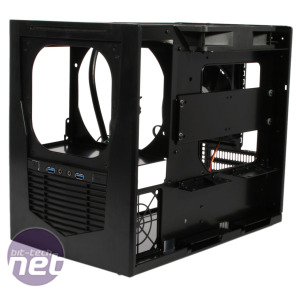
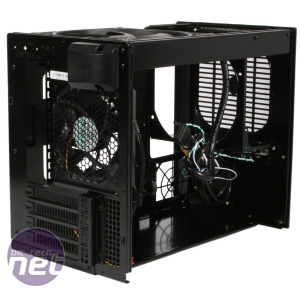
Click to enlarge - Having drives mounted on the back of the motherboard tray (left) leaves room for longer graphics cards (right)
The motherboard is a tight fit, as you might expect, but SilverStone still manages to provide a massive cutout and pre-installed motherboard mounts to save you a bit of work. Other handy additions are the USB downstepping cable for motherboards without USB 3 headers, and a fan to molex adaptor that enables you to connect all of the case's default fans to a single molex connection.
Thanks to the open roof access, slimline optical drives are simple to install, but the same cannot be said of the internal drives, which are installed flat against the back of the motherboard tray. SSDs in particular are very fiddly, using only two small bits of plastic that are a nuisance to line up and re-attach once you've screwed the drive into them. Furthermore, wiring in our two drives was tight enough – we wouldn't like to have to deal with the cabling if all six empty bays were utilised.
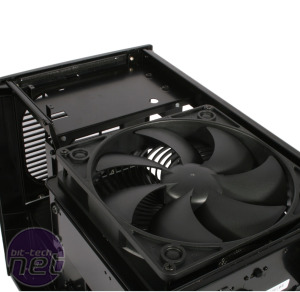
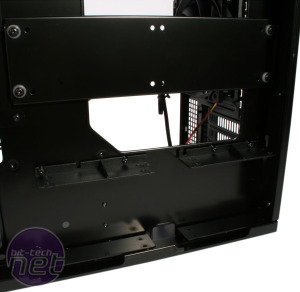
Click to enlarge - There's room for a single slim optical drive (left), along with four SSDs and two HDDs (right)
A modular PSU is highly recommended, as even with our fully modular one, cabling was very tight. A single hole beneath the PSU lets you route power cables through to the case's interior, and we were able to tuck a lot of cables in the front section beneath our GPU and PSU. With another graphics card and an 80mm fan in the right side panel, however, things could become very tricky indeed.
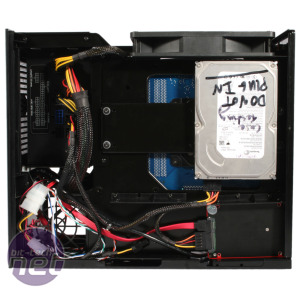
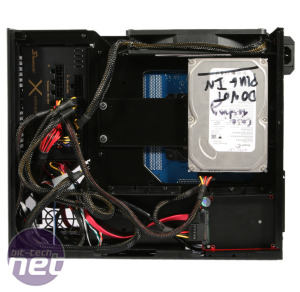
Click to enlarge - The Strider series PSU with its short cable set (left) significantly reduces cable clutter compared to a normal modular one (right)
We have to say that the benefits of SilverStone's 600W Strider series PSU combined with the short cable set were very apparent when we installed it. Firstly, it eliminated the aforementioned problem of not being able to close the lid and panel properly. The smaller cables also reduced cable clutter significantly, which would be a real bonus if you were to install more hardware than we did. Naturally, we can't recommend the Strider series of PSUs fully as we haven't tested any of them, but their form is undeniably well suited to the SG09.

MSI MPG Velox 100R Chassis Review
October 14 2021 | 15:04

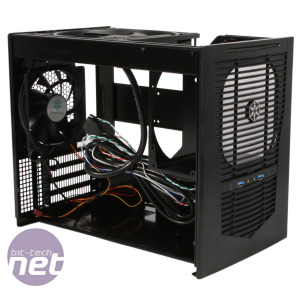
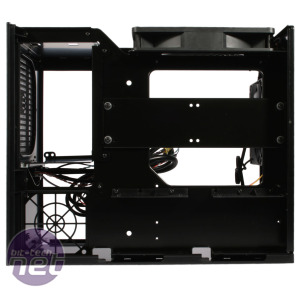







Want to comment? Please log in.